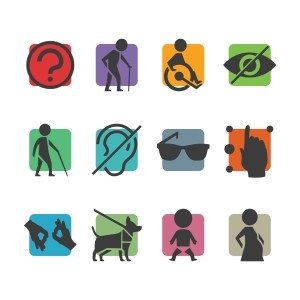
Tag Archives: services
Government Grants for People with Disabilities
Find government grants and financing for handicap vehicles for people with disabilities nationwide. Money can be located with a little patience and a lot of research through various government programs. We’ve compiled a list of the most well-known government grant programs to assist your search for help funding a wheelchair van.When paying for a handicap van, you can use money from government grant programs for people with disabilities, as well other funding resources like disability grants, loans, fundraiser money, foundation endorsements, or any other funding source. We’ll work with your chosen foundations or any government grant program, after they verify financial assistance, to get you on the road!
To learn more about applying for wheelchair van grant funding to buy a handicap van or convert a pre-owned minivan, read “How to Apply for a Grant for Wheelchair Vans, Mobility Equipment, or Minivan Conversions.”
Government Wheelchair Van Financing Resources
Fund your wheelchair van with these government grant programs provided by the U.S. government and locally in your state.
Administration for Children & Families
On this website, new funding opportunities are displayed as they become available.
Grants.gov
The U.S. government resource listing federal grants available.
Medicaid
Sometimes provides assistance when children or other special circumstances are involved.
Medicaid/Department of Human Services (DHS)
Children are screened as part of the Early and Periodic Screening, Diagnosis, and Treatment (EPSDT) program of Medicaid. Under Medicaid’s “rehabilitative services,” people often receive handicap van or lift funding to achieve their “best possible functional levels.”
Vocational Rehabilitation (VR)
Located within each state’s Department of Human Services (per state), helps you prepare for work, train for a job, find a job, or keep a job as early as high school. Services are prioritized according to the severity of the disability.
Department of Assistive and Rehabilitative Services (DARS)
Check your state’s branch for grant availability.
Division of Developmental Services (DDS)
Check your state’s branch for grants.Those with Supplemental Security Income (SSI) benefits from the Social Security Administration can contact the agency about its Plan to Achieve Self Support(PASS). A PASS plan sets aside income to buy equipment or services in a way that keeps income, as well as resources, below the SSI eligibility cut-off so there are no reductions in benefits. The emphasis is on whether the handicap van or equipment will help the SSI recipient become vocationally self-sufficient. It’s important for an individual to contact and receive the approval of Social Security before setting up a PASS plan. Once money has been set aside for a PASS, spending it on something else can result in the loss of SSI benefits.Please note: You can use multiple sources of funding that include grants, loans, and other funding assistance. If you’re unable to find government grants for people with disabilities or need to acquire more money to help pay for your wheelchair van and/or mobility needs, check out more opportunities at our mobility finance page.
Sixth Annual Ink Jam Tattoo Sudio Veteran’s Advocacy Services Summer Bash

Universal design

Universal Design makes things safer, easier and more convenient for everyone.
Universal Design involves designing products and spaces so that they can be used by the widest range of people possible. Universal Design evolved from Accessible Design, a design process that addresses the needs of people with disabilities. Universal Design goes further by recognizing that there is a wide spectrum of human abilities. Everyone, even the most able-bodied person, passes through childhood, periods of temporary illness, injury and old age. By designing for this human diversity, we can create things that will be easier for all people to use.
Who Does Universal Design Benefit?
Everyone.
Universal Design takes into account the full range of human diversity, including physical, perceptual and cognitive abilities, as well as different body sizes and shapes. By designing for this diversity, we can create things that are more functional and more user-friendly for everyone. For instance, curb cuts at sidewalks were initially designed for people who use wheelchairs, but they are now also used by pedestrians with strollers or rolling luggage. Curb cuts have added functionality to sidewalks that we can all benefit from.
What can be Universally Designed?
Everything.
- Universal Design can apply to anything that can be designed, including products like door handles, kitchen utensils and smartphones.
- Universal Design can be applied to architecture and the built environment, including public and commercial buildings, as well as residential buildings and family homes.
- Universal Design can also be applied to the community at large through urban planning and public transportation.
Universal Design vs. the Americans with Disabilities Act
The Americans with Disabilities Act (ADA) is a piece of legislation that protects the civil rights of people with disabilities by ensuring that they are not unfairly denied access to job opportunities, goods or services due to their disability. The ADA includes the 2010 ADA Standards for Accessible Design, which outlines accessibility requirements for buildings and facilities. There is a great deal of overlap between what is required under the ADA and what would be suggested by Universal Design, but there are also differences. The ADA outlines the bare minimum necessary in order to curb discrimination against people with disabilities, while Universal Design strives to meet the best practices for design, which are always evolving and improving as we continue to learn more about how to best meet people’s different needs. The ADA focuses solely on the civil rights of people with disabilities, while Universal Design is designed with everyone in mind. The ADA does not apply to single family residences, while Universal Design can and should.
Below are some examples of universal designs:
Low Force Flooring Materials
There is actually a reason that short, stiff carpets and hard surface floors are found in most public buildings. If you use a wheelchair, you know how difficult it can be to push through even slightly plush carpet. Wheelchairs, handcarts, strollers – they are all easier to operate on hard surfaces.
Seamless Room Transitions
Room thresholds are most common in transitions between areas of carpeting and hard surfaces, and those lips can be not only difficult, but painful to maneuver over. Sticking to a consistent flooring style and removing those thresholds can make a huge impact on ease of maneuvering an interior.
Access for Pools
An hour of freely moving around in the water gives people with severe arthritis, muscle atrophy, and more a way to recover and live a significantly more pain-free life. This is why an increasing number of public pools have accessible chairs on metal arms by the side of the pool.
Lever Handles Instead of Knobs
Knobs, while being visually more appealing, require quite a bit more arm and wrist torque to move the bolt. Lever handles require both less force and overall motion.
Close Captioning/Large Print
Tablets, eReaders, smartphones, and more have shortcuts to increase font size easily – another great example of subtle universal design. This is the same principle behind why Netflix, YouTube and others alike now have captioning built in. Disability or not, these features can make life easier.
Paratransit Services
Paratransit Services have vastly changed the way individuals with disAbilities get around their hometown, increasing both their freedom and independence to travel where they want, when they want.
What Is Paratransit?
Paratransit is a specialized, door-to-door transport service for people with disabilities who are not able to ride fixed-route public transportation. This may be due to an inability to:
- Board, ride or disembark independently from any readily accessible vehicle on the regular fixed-route system.
- Access existing accessible fixed-route transportation because that transportation is not available at the needed time on that route.
- Get to boarding/alighting locations of regular public transportation.
Typically, paratransit is provided in a demand-responsive mode (i.e., the person with a disAbility must make a telephone call to arrange service).
The passage of the Americans with Disabilities Act (ADA) in 1990 recognized that people with disAbilities have the same rights as other citizens to access services and facilities that are available to the public, including transportation. The U.S. Department of Transportation (DOT) is responsible for the enforcement of ADA’s transportation requirements.
Eligibility Requirements
Since most true paratransit services are subsidized by federal, state or county governments, or other municipal agencies, users must be able to meet one of the following three eligibility requirements. (Note: Individuals may be eligible for paratransit on the basis of a permanent or temporary disability. The individual must meet one of the three eligibility criteria, whether permanently or for a limited period of time.)
Category 1:
Individuals who are unable, because of a physical or mental impairment, to board, ride or disembark independently from any readily accessible vehicle on the regular fixed-route system. Among others, this category includes people with mental or visual impairments who, as a result of their disability, cannot navigate the system. This means that, if an individual needs an attendant to board, ride or disembark from an accessible fixed-route vehicle (including navigating the system), the individual is eligible for paratransit.
Category 2:
Also eligible are those people with a physical or mental impairment who could use accessible fixed-route transportation, but the accessible fixed-route transportation is not available at the needed time on a particular route (the accessible vehicle is down for maintenance, the lift cannot be deployed, etc.).
Category 3:
Any individual with a specific impairment-related condition that prevents that person from traveling to a boarding location or from a disembarking location on the system. In this case, the impairment must prevent travel to or from a fixed-route stop. Significant inconvenience or difficulty does not form a basis for eligibility under this section. Further, barriers not under control of the public entity providing the fixed-route service (such as distance or weather) do not by themselves form a basis for eligibility under this section. These situations are resolved on a case-by-case basis, determined by evaluating the interaction between the impairment-related condition and the barrier in question.
Costs
Again, since most true paratransit services are subsidized, the cost to the rider can be very low, as opposed, for example, to the cost of an accessible commercial taxi or limousine service, which provides door-to-door service but does not qualify as a true paratransit service. It should be noted that Medicare does not pay for transportation services except in the case of emergency.
When you contact a paratransit service through one of the methods outlined below, you should specifically request information about such things as cost per trip, advance notice requirements, scheduling of return transportation, etc.
